Meanwhile, in the 2nd Ukrainian Front’s sector, operations were taking place at Blitzkrieg speed, and even so farseeing a commander as Manstein was being left behind by events. Almost at the same time as he was suggesting to Hitler that the 6th and 8th Armies be withdrawn behind the Dniestr, Marshal Rotmistrov’s 5th Guards Tank Army and General Kravchenko’s 6th Army reached and crossed the river on either side of the town of Soroki.
Worse still, on March 21, Marshal Zhukov, who had regrouped his forces after his moderate success at Tarnopol’, attacked the point just where the commands of General Raus and Hube came together. Throwing three tank armies into the attack, he broke through and immediately advanced south; by the 23rd his forward troops had reached the Dniestr at Chernovtsy, with the resultant danger that the 1st Panzerarmee, fighting near Proskurov on the Bug, would be cut off. It had to be ordered to move west and try to make contact with the 4th Army, for already the only means of supplying it was by airlift.
After a whole day spent in sending and receiving a series of curt telephone calls, Manstein was peremptorily summoned to the Berghof. Here he was received by Hitler at about noon on March 25, and it was only after hours of discussion, and Manstein’s threat to resign his command, that Hitler gave in on the two points he was most insistent upon: firstly, he was authorised to tell Hube to fight his way through to the west, and secondly he was assured that he would very soon be reinforced by the Waffen-S. S. II Panzer Corps which, in case there was a crossChannel landing, was stationed near Alengon.
But this meeting had lost the Germans 48 hours, of which the Russians took full advantage: on March 27, the Russian 1st and 4th Tank Armies, commanded respectively by Generals D. D. Lelyushenko and K. S. Moskalenko, joined up at Sekiryany, on the Dniestr’s right bank, and behind the 1st Panzerarmee. Hube was thus caught in a trap near
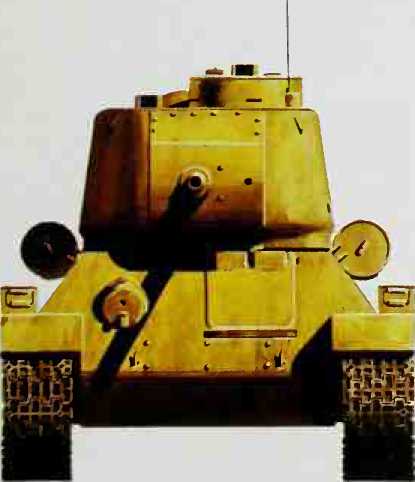
The Russian T-34/85 medium tank
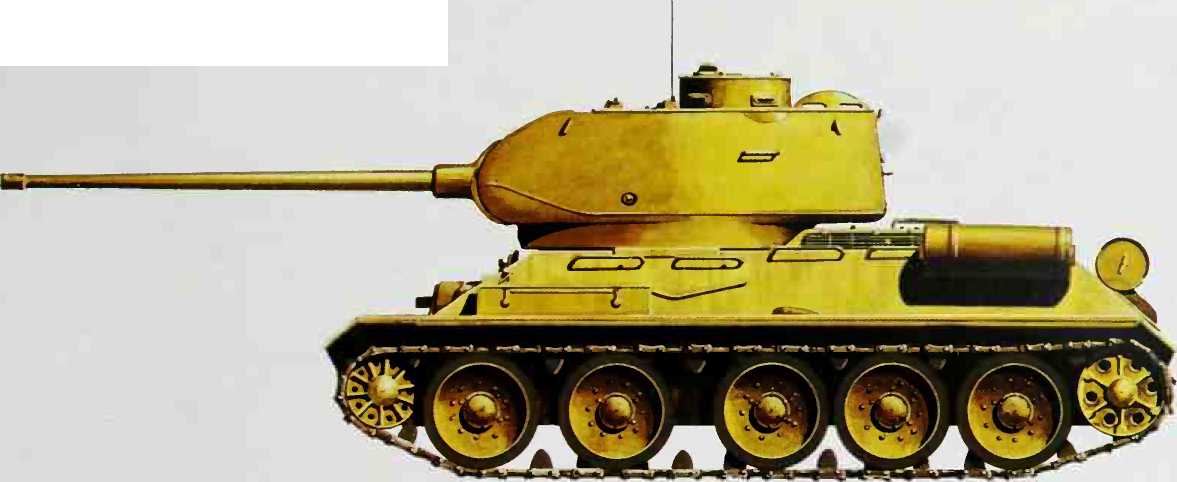
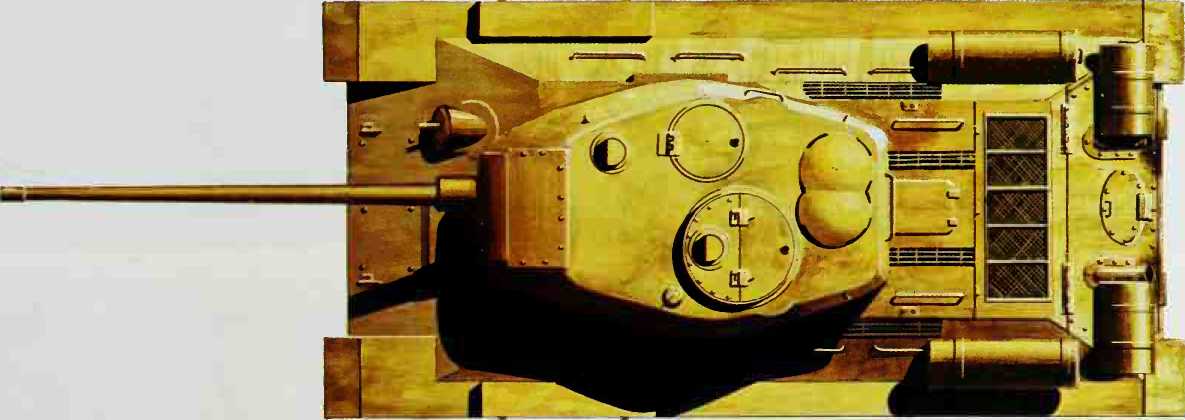
Weight; 32 tons.
Crew; 5.
Armament: one Ml944 85-mm gun with 56 rounds and two 7.62-mm Degtyarev machine guns with 2,745 rounds.
Armour; hull glacis, nose, sides, and rear 47-mm, decking 30-mm, belly 20-mm; turret front 90-mm, sides 75-mm, rear 60-mm, and roof 20-mm.
Engine: one V-2-34 12-cylinder inline, 500-hp.
Speed; 32 mph on roads, 10 mph cross-country.
Range; 220 miles on roads, 125 miles cross-country. Length ; 24 feet 9 inches.
Width; 9 feet 10 inches.
Height: 7 feet 11 inches.
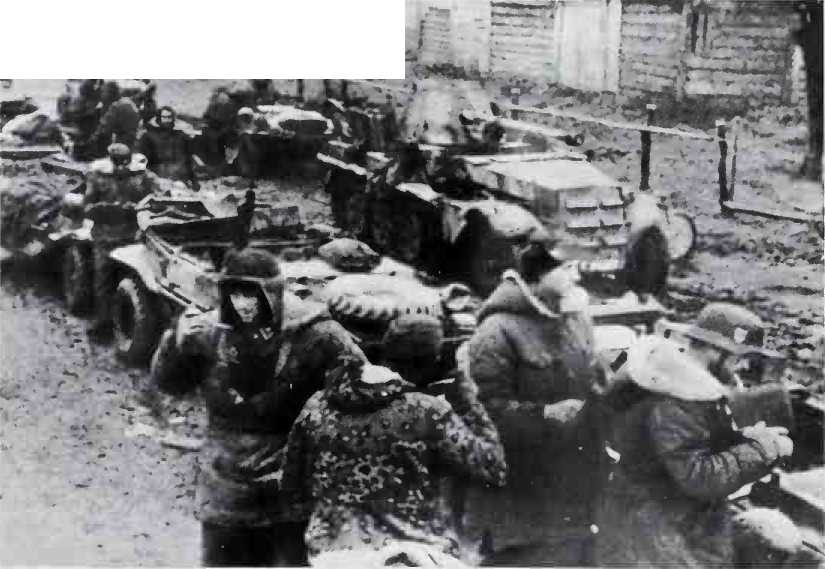
A A Aftermath of battle in a Ukrainian village street. Russian soldiers examine the bodies.
A A pause during the long retreat for a Waffen-S. S. motorised unit.
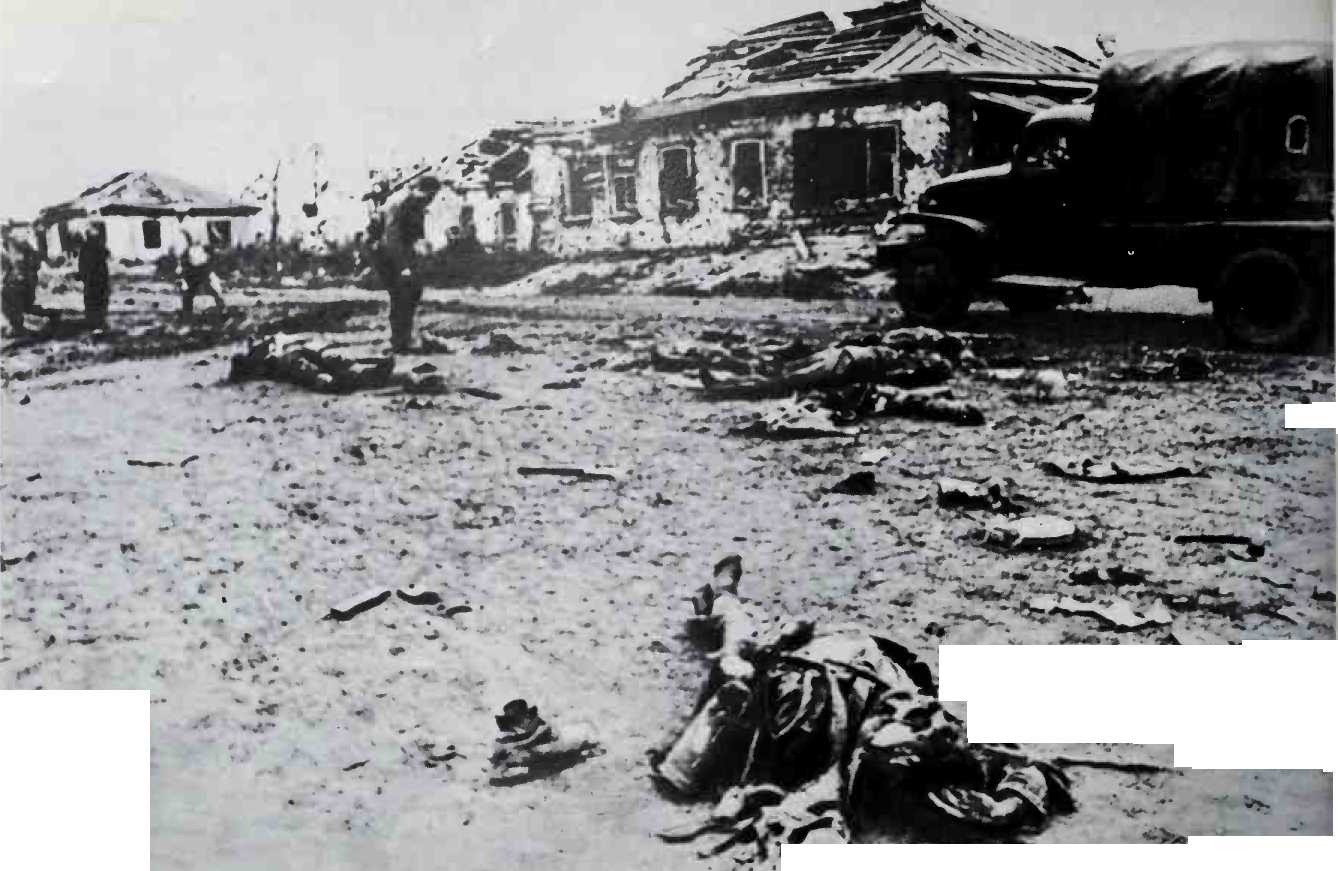
¦ n
XT - ¦ • .
Scl
La

Skala-Podolskaya with about ten divisions, including three Panzer divisions, there is no doubt that everything south of the Pripet would have collapsed if this brave general, who had lost an arm in World War I, had notshown such optimism, resolution, and skill, and inspired such confidence in his troops, both officers and other ranks.




 World History
World History









